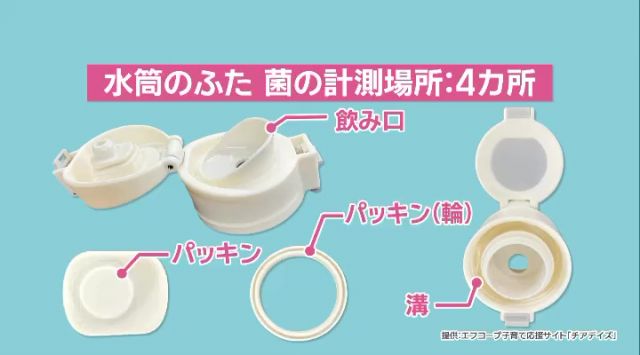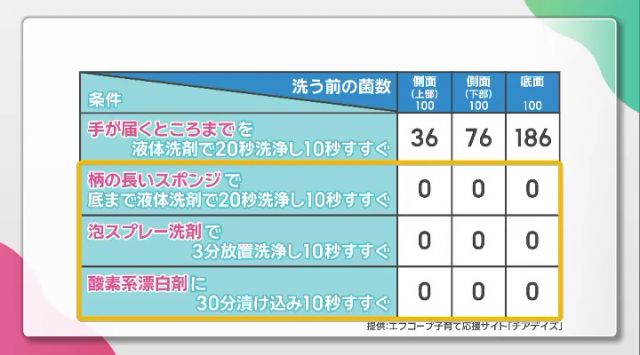Daily water bottle cleaning can be a hassle.
However, neglecting it can turn the bottle into a “breeding ground for bacteria.”
We spoke to a microbiological testing expert about this issue.
Q. Is summer a time when bacteria thrive?
“With high temperatures and humidity, bacteria multiply more easily. They feed on moisture and nutrients from drinks, so caution is necessary.”

Data from a study on “bacteria in water bottles” shows that hard-to-reach areas retain bacteria even after cleaning.
The study used a stainless steel bottle with detachable parts—lid, seal, and mouthpiece.
To simulate dirty conditions, the bottle was soaked in bacteria-laden liquid, and bacterial counts were measured at four points on the lid.
Results were compared between cleaning without disassembly and cleaning after disassembly.
Even after disassembly, bacteria remained in hard-to-clean areas when only a sponge was used.
“Residue in crevices can turn into a breeding ground for bacteria. Long-term use leads to scratches where bacteria can hide and multiply.”

Next, bacteria were examined on the “bottom” and “sides” inside the bottle.
When only reachable areas were cleaned, bacteria were detected in all tested spots.
On the other hand, effective methods included using long-handled sponges, foaming spray cleaners, and oxygen-based bleach.
“For daily care, a quick clean with foaming spray is recommended. For deeper cleaning, use bleach once a week for disinfection, deodorizing, and stain removal.”






